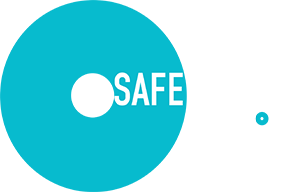Fipronil and imidacloprid…careful what you ask for!
A recent article in The Veterinary Record sent to us on 26th July stated that Jeremy Johnson is calling for reclassification of AVM-GSL products containing fipronil and imidacloprid. This blog is written to clarify Vetpol’s position; this is a complex issue hence a lengthy article so here is a summary….
When a veterinary medicine is classified POM-V, POM-VPS or NFA-VPS the prescriber is obliged to provide advice on safety (including environmental safety) and also to supply the minimum quantity of product. When a veterinary medicine is classified AVM-GSL there are no legal restrictions on retail supply.
The Veterinary Products Committee (VPC) has been looking at the matter of residues of imidacloprid and fipronil appearing in freshwater environments for years, including twice over the last year. However, according to the published VPC minutes, the VPC has not recently considered the question of whether these products should be classified AVM-GSL or NFA-VPS.
The Veterinary Record asked us to comment on this and we told them that in our view it is a matter for the VPC. The VPC has access to all the available evidence. The minutes of the VPC published over the last year include a request to consider a ban on use of these actives. Vetpol does not wish to see these products banned because of their importance to both human and animal health and in particular because of their role in reducing the risk of arthropod borne zoonoses to humans.
Could somebody else provide an independent view on imidacloprid and fipronil?
Approximately a year ago we joined RUMA CA&E. Our reason for joining is that we are interested in prescriber records for equine POM-VPS dewormers (or ‘wormers’ if you prefer). We said so, candidly. This is because there are no new actives on the horizon and it is a serious animal welfare issue for horses, something we care about just as much as we care about the environment. It is also not possible to implement the CANTER guidelines unless all RQPs are obliged to keep records that include animal identification. But at the same time as we advised RUMA CA&E that prescriber records for equine dewormers is what our present focus is, we also said very early in 2023 that in our view RUMA CA&E will need a position on environmental contamination with imidacloprid and fipronil. Flea treatments containing these actives might be going down the drain but this issue is not going away.
The rest of us are just outsiders looking in….
The difficulty with this issue is that there are many products on the VMD product database containing fipronil and/or imidacloprid that are licensed POM-VPS, NFA-VPS and AVM-GSL. The only people who really know what the volumes of these products sold is, by which category, and where they are sold, are the pharmaceutical industry and the Veterinary Medicines Directorate. I am assuming that the Pharmaceuticals in the Environment (PIE) group has already requested the data, having been in existence and looking at this issue for a year now. As the rest of us are just outsiders looking in it is true to say that we do not have definitive evidence for which categories of products these actives are coming from, even if we can see some helpful information on VMD Connect.
What are we sure of today then?
But we do have enough evidence now to be reasonably sure that the source is flea treatments going onto dogs because of what the actives are still licensed for, and to be used on what, together with the locations that the recent evidence of contamination is originating from…urban waste-water discharges. Vetpol ran the first ever SQP Congress in April and one of the questions SQPs came up with was, why is the VMD continuing to reclassify these products as AVM-GSL? Most people who have looked at the science and know something about it believe that it is coming from dog flea-treatments. SQPs do know something about it and they certainly aren’t in much doubt. The Veterinary Products Committee recently considered a request for a ban from the Pesticides Action Network and the VPC concluded in its minutes from February 2024.
“VMD has met with the Pesticides Action Network (PAN) to discuss their proposal that certain veterinary pesticides are banned.”
At Vetpol we are sure that we don’t want a ban and we think that a more proportionate response to our current situation is required. In the minutes of its February 2024 meeting the VPC concluded amongst other things “It is not just an issue for companies to solve and public messaging will be important. The next step is for the group to share its findings with a wider audience.”
Vetpol does not want a ban on these actives
Vetpol does not wish to see a ban on these actives because of their importance to human and animal health, in particular because of their role in preventing zoonoses. But if the VMD and the VPC wait long enough then probably investigators are going to start looking for other actives in our watercourses. If they look then they may find them and the calls for bans to be read may spread to other actives and affect other very long-standing relationships that aren’t necessarily bad for society. The reason investigators have found imidacloprid and fipronil is that these are the actives the investigators were looking for, not because there aren’t others out there in freshwater environments. Also present in licensed canine antiparasitic treatments on the VMD product database are indoxacarb, permethrin, piperonyl butoxide, dimpylate (diampron), nitenpyram, methoprene, fluralaner, deltamethrin, spinosad, lotilaner, pyriproxifen, afoxalaner, sarolaner, chlorbutol, phenoxyethanol, pyriprole, and dinetofuran.
And do we really have a problem with flea treatments?
Just because these actives are in licensed flea products on the VMD Product Database it doesn’t automatically follow that they are causing a problem. Even if we find them in watercourses, if the levels of the actives are consistently below what is known as the NOEL (no observable effect level) and if their fate in the environment is that they hydrolyse, don’t bioaccumulate, move into the food chain, damage parts of it or negatively and irreversibly affect biodiversity in the part of the environment that they end up in, then there still may not necessarily be a problem. But whether a product causes an environmental impact or not depends heavily upon how it is used and therefore on responsible prescribing. This comes back to the distribution category awarded by the competent authority (VMD).
Making decisions based on science and evidence…or upon hearsay?
The Veterinary Record article also makes another interesting statement. It mentions rumours of resistance to flea-treatments.
In fact, flea resistance to these actives is unlikely even if not impossible. We know that sheep scab mites resistant to macrocyclic lactones are present in the UK, and diazinon sheep dip use is on the rise because of helminth resistance to macrocyclic lactones. But the sheep scab mite can only live on the sheep. Fleas spend a large portion of their lives off the host and many live on other hosts in the environment where they will not be exposed to the active. Thus far, people have certainly looked for fleas resistant to canine flea-treatments and not found it… the rumours of resistance in the marketplace are still just hearsay. It doesn’t follow though that resistance to other canine ectoparasites that must spend their entire life on the animal could not happen.
The thorny…or hairy…question of no evidence for resistance but why we might still have a problem to avoid
Treatment failure does often happen for other reasons even if the animal owner or sometimes a vet thinks that there is “resistance”. If an animal owner is happily buying large quantities of an AVM-GSL flea treatment from a retail outlet and not having to worry about the cost of reapplication, when treatment appears to ‘fail’ the retail customer can just put a bit more on. This is because it’s cheap and the customer can buy it in volume, not the minimum quantity that a RQP must supply whilst advising on environmental safety, as is an RQP’s obligation under the VMR.
If the ‘animal parents’ have tried to keep their much-loved family dog happy and healthy by taking it swimming every day, or have bathed the dog with tender care, not aware that this may inactivate the product, then along with being unaware that there may be a problem with washing the product down the drain with their pleasantly fragrant dog shampoo they are going to have ‘treatment failure’. If they don’t understand the flea lifecycle and how it applies to their family home, a home that the dog is very much part of, then inactivating the product and not addressing environmental reservoirs of infestation will result in apparent ‘treatment failure’. That’s not resistance but we still have an education problem.
So whose problem is the education problem anyway?
The Veterinary Products Committee and the Veterinary Medicines Directorate have been considering the issue of contamination of freshwater environments with fipronil since evidence of it started to emerge in 2016. Now, we could say that at Vetpol as we can’t influence this, we should follow the Hitch Hikers Guide to the Galaxy recommendation of ‘generating a somebody else’s problem field’ around the issue of fipronil and imidacloprid in watercourses. We believe that SQPs registered with us don’t actually think that we should. SQPs attending SQP Congress care both about animal welfare and the environment. They would like to be empowered to do something about the problem.
In reality, if flea treatments currently sold as AVM-GSL had to be reclassified and sold as NFA-VPS whilst reclassification happens, that doesn’t matter. SQPs qualified with Vetpol are qualified to do it and the products may still be made widely available to pet owners. But that’s not a decision for me, or us…a director of a SQP Registration Body is a stakeholder, but he or she is clearly not an independent one. And none of the rest of us has access to the data anyway…we are all just outsiders looking in and waiting for an answer to an important question that has been floating around since 2016.
Not only would it be helpful for the VPC to consider the AVM-GSL vs. NFA-VPS question, but it would also be helpful for the VPC to publish its view on this very specific issue, having had access to all the evidence that the rest of us cannot see or ask for access to. With dog collars containing diampron for example I would predict no impact because the amounts needed are small and the product is hydrolysed in water. With spot on products containing imidacloprid and fipronil I simply don’t know because I do not have access to the data. So if the VPC believes that there is not an unacceptable risk in products being classified AVM-GSL versus NFA-VPS it would help us all if they come out and say so. And it also helps us all if they say why.
Customers need help with choosing flea treatments
Customers need help and it is easy for us to make incorrect assumptions about what consumers understand. Wandering around an unfamiliar Tesco last week I made the wrong assumption that the cheese might be near to the dairy products. Whilst then asking for the gluten-free section I discovered that the very nice person in the Tesco uniform did not appear have any real understanding of what that was. At Vetpol we use trademarks to signpost the qualified people registered with us to point customers in the direction of the help that they need. The questions we ask now when dealing with customers should include “…does your dog swim…do you bathe your dog?” And we also need to get better over time. The questions we ask in future should probably also include “…does your child help you to bathe the dog?”
As the VPC considers the question of AVM-GSL vs. NFA-VPS we hope that the committee will remember that the profession of SQPs is there to help the customer.
How we got to where we are today…and where do we go from here with flea treatments in dogs?
The classification of veterinary medicines is an ongoing process. It’s normal that we ask questions in the light of new evidence. Including the AVM-GSL vs. NFA-VPS question.
More than two decades ago I was involved in the hearings held for the report by Sir John Marsh, and also the investigation by the Competition Commission into the supply of veterinary medicines. These two reviews both asked the Veterinary Medicines Directorate to classify veterinary medicines in the lowest possible regulatory category….and you can’t really blame them for doing it can you?
When you consider what is “..the lowest possible regulatory category” the question is how much risk do you want to take? And with what? The people handling the product? The environment? Our food chain? Our exports? But the recommendation of a review by a body like the Competition Commission creates pressure to take more risk somewhere. In consideration of the additional risks you also need to look at how they might be mitigated and whether those measures are sufficiently robust.
The Competition Commission did not conclude whether the situation they found two decades ago acted for or against the public interest, even though it was part of its remit. In my opinion as a veterinary surgeon the Competition Commission did not spend sufficient time then in considering the usefulness or effectiveness of their proposed remedies and I suspect that they had other reasons to move on and turn their attentions elsewhere that were nothing to do with animal health. Certainly, they did not appear to be focused on protection of the environment, the current zeitgeist. Now, the Competition and Markets Authority (CMA) is conducting a similar review although for slightly different reasons…. reasons to do with the way the veterinary market has been restructured in the intervening two decades and its current direction of travel.
Careful what you ask for…
As they go through their deliberations, I do hope that the people at the CMA take the time to learn from what the Competition Commission did all those years ago. Associations representing veterinary professionals also need to consider them.
As they consider the question of how we help loving pet owners, or ‘pet parents’, to find the help that they need to protect both their loved family members (whether on two legs or four) and the environment, I think that the CMA also needs to remember the maxim …“Careful what you ask for!”
Dr. Jeremy Johnson BVSc MRCVS, Director, Vetpol Ltd




